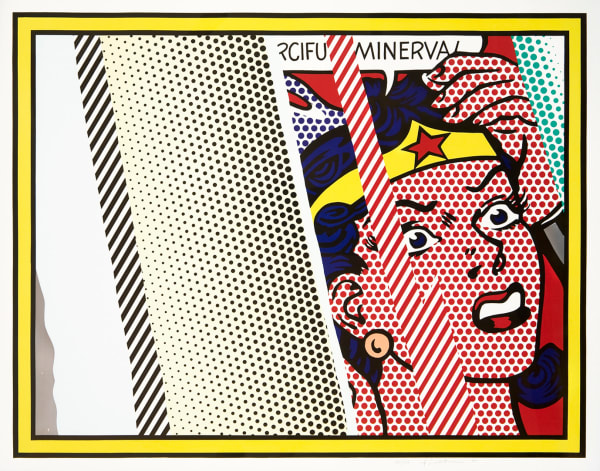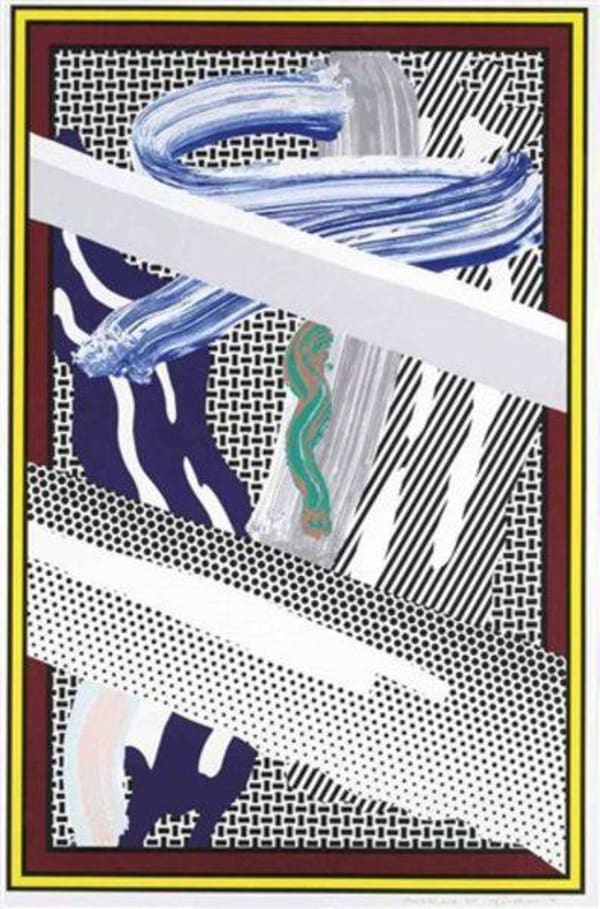In "All American Icons" we explore how Roy Lichtenstein masterfully distills the essence of mid-20th century America through bold, stylized vignettes that both reflect and critique the visual culture of the time. Drawing inspiration from comic strips, advertising, and mass media, Lichtenstein transformed the everyday imagery of postwar consumerism into high art. His use of Ben-Day dots, primary colors, and thick black outlines mimicked the mechanical reproduction processes of the era, while subtly highlighting the artificiality of the images that shaped public consciousness.
The contradictions of American life—caught between Cold War heroism and domestic idealism, romance and alienation - are in full display. These scenes, frozen in dramatic moments, echo the emotional shorthand of popular culture. Lichtenstein’s style, rooted in both irony and reverence, presents a hyperreal mirror of America’s mid-century psyche.
Lichtenstein didn't just portray American life—he revealed how it was packaged, consumed, and mythologized. His art continues to resonate as a critical lens on how style, narrative, and identity were constructed during one of the most image-saturated periods in American history.
-
-
 Roy LichtensteinNude Reading (C. 288), 1994
Roy LichtensteinNude Reading (C. 288), 1994 -
 Roy LichtensteinThinking Nude (C. 289), 1994
Roy LichtensteinThinking Nude (C. 289), 1994 -
 Roy LichtensteinReflections On Crash (C.239), 1990
Roy LichtensteinReflections On Crash (C.239), 1990 -
 Roy LichtensteinReflections On Minerva (C.244), 1990
Roy LichtensteinReflections On Minerva (C.244), 1990 -
 Roy LichtensteinImperfect Diptych (C. 225), 1988
Roy LichtensteinImperfect Diptych (C. 225), 1988 -
 Roy LichtensteinReflections on Expressionist Painting (C. 255), 1965
Roy LichtensteinReflections on Expressionist Painting (C. 255), 1965 -
 Roy LichtensteinI Love Liberty (C. 192), 1982
Roy LichtensteinI Love Liberty (C. 192), 1982 -
 Roy LichtensteinTwo Paintings : Dagwood (C. 207), 1984
Roy LichtensteinTwo Paintings : Dagwood (C. 207), 1984 -
 Roy LichtensteinTwo Paintings: Sleeping Muse, 1984
Roy LichtensteinTwo Paintings: Sleeping Muse, 1984 -
 Roy LichtensteinComposition II (C. 298), 1996
Roy LichtensteinComposition II (C. 298), 1996 -
 Roy LichtensteinArt Critic (C. 305) , 1996
Roy LichtensteinArt Critic (C. 305) , 1996 -
 Roy LichtensteinShipboard Girl (C. II 6), 1965
Roy LichtensteinShipboard Girl (C. II 6), 1965 -
 Roy LichtensteinStill Life With Picasso (C. 127), 1973
Roy LichtensteinStill Life With Picasso (C. 127), 1973
-
-














